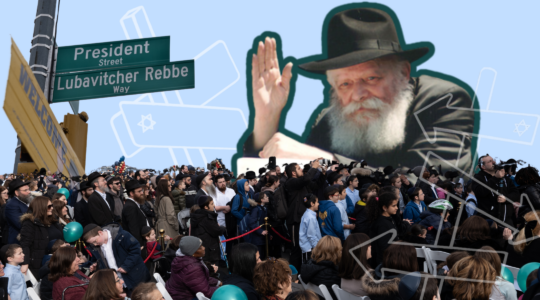For a small country, Latvia has an impressive Jewish legacy that includes the violinist Gidon Kremer, the painter Mark Rothko and the philosopher Isaiah Berlin. Sergei Eisenstein, who filmed “The Battleship Potemkin,” came from a Latvian Jewish family, as did the conductor Mariss Jansons, whose mother escaped the Riga Ghetto just before his birth.
Yet Riga, the largest Baltic capital (with just over 600,000 residents), gets relatively little attention from American Jewish travelers. Its cobblestoned streets and Art Nouveau buildings are increasingly popular with Continental tourists, however, thanks to the city’s turn as a 2014 European Capital of Culture and the proliferation of cheap package deals for British stag parties.
Strolling medieval alleys in the shadow of buildings from Riga’s days as a Hanseatic League port, you’d never guess the city was heavily bombed during World War II, when the Holocaust effectively vanquished Jewish life there.
Today, both the town and its Jewish community thrive amid a proud democratic renaissance — albeit with smaller populations than before. Approximately 8,000 Jews are members of Riga’s official Jewish community, which was revived in the waning days of Soviet rule with the 1988 founding of the Latvian Society for Jewish Culture.
The Art Nouveau Peitav Synagogue is the lone survivor of more than a dozen prewar shuls; its central location was deemed too sensitive for destruction. But even this temple weathered misfortunes, suffering a series of bombings in the ’90s before a glorious restoration as Riga’s main temple.
A medieval city wall was reconstructed after the war; so was the city’s iconic landmark, the amusingly named House of Blackheads, an ornate 14th-century merchants’ guild that had been completely destroyed.
Astonishingly, most of Riga’s historic architecture survived the 20th century intact. Visitors flock here for what is believed to be the world’s largest collection of Art Nouveau buildings, a profusion of flowery façades that have earned the city a UNESCO World Heritage designation.
By this time, you may be convinced Riga is ripe for discovery. A growing number of discount flights make the city an easy add-on from Scandinavia or Central Europe; the cool Baltic climate and Northern latitude are ideal for summer sightseeing.
And while Riga may never have been “Jerusalem of the North,” as its Lithuanian neighbor, Vilnius, was known, there are enough Jewish heritage sights to fill a weekend itinerary.
Get a look at both old and new Jewish Latvia in a white Art Nouveau building on Skolas Street. Designed in 1913 by Jewish architects as a social hall, the space hosted a flourishing Jewish culture during the interwar years: Yiddish-language theater, holiday parties, a library and various communal organizations.
During World War II, Nazi occupiers took over the building. Once they were gone, the Soviets took a liking to the structure as well, using it for several Communist Party conventions.
Now a state-designated landmark, the historic structure serves as headquarters for Riga’s Jewish community. A popular café gives locals a place to mingle alongside rotating exhibitions; people come to visit social service offices or to catch klezmer concerts and lectures about Israel.
In a handsome, columned gallery, the Museum of Jews in Latvia — opened in 1989 by Jews emboldened by the end of Soviet repression — reveals a lost world of cosmopolitan Jewry through centuries of family photographs, political and theater posters, ritual art, and other artifacts.
Near the Daugava River waterfront, the Great Choral Synagogue was once one of Europe’s grandest temples. Amid the pretty stone buildings of Old Riga, the space between the synagogue’s brick-wall ruins is a gaping hole in the historic core, a haunting reminder of Nazi destruction. Today it is the site of a Holocaust memorial — rough, angular slabs, etched with victims’ names, juxtaposed with what remains of the temple’s graceful arches.
A short walk away, the Riga Ghetto and Latvia Holocaust Museum (currently open during renovation) is an immersive wartime experience. Grim barrack walls, a deportation train car and the painfully austere furnishings used by confined Latvian Jewish families evoke the visceral horror of a Nazi-era ghetto in a way no single photo can.
Out in the sunlight of the 21st century, you might clear your head at the nearby Central Market, one of Europe’s largest, where shoppers bustle amid colorful produce and local artisan wares. Then head back downtown to the Radisson Blu, a onetime Soviet lodging whose Skyline Bar offers the best view in town.
Take in the red roofs of Riga from the 26th floor … and consider how far this Baltic outpost has come.
The New York Jewish Week brings you the stories behind the headlines, keeping you connected to Jewish life in New York. Help sustain the reporting you trust by donating today.




